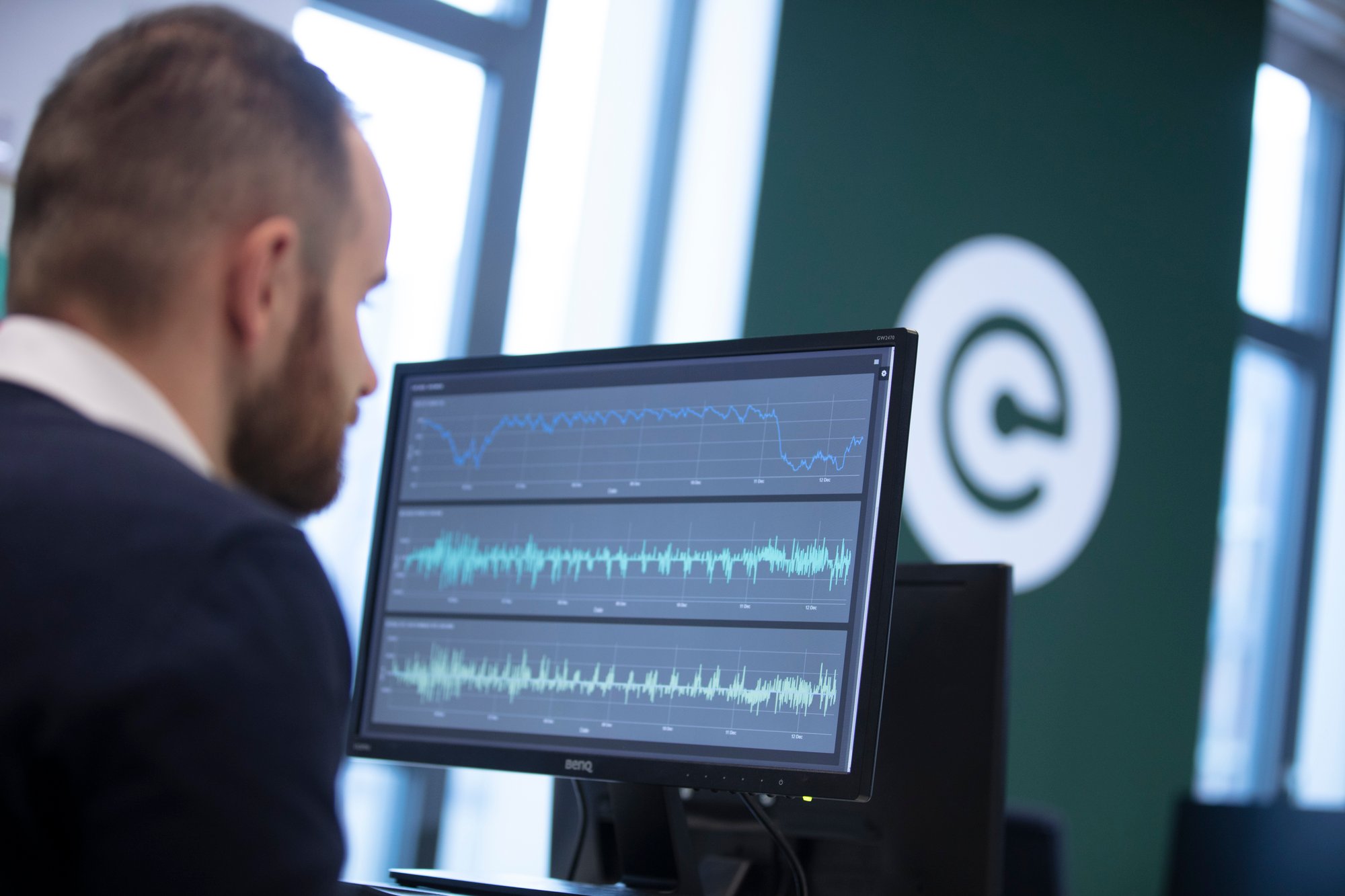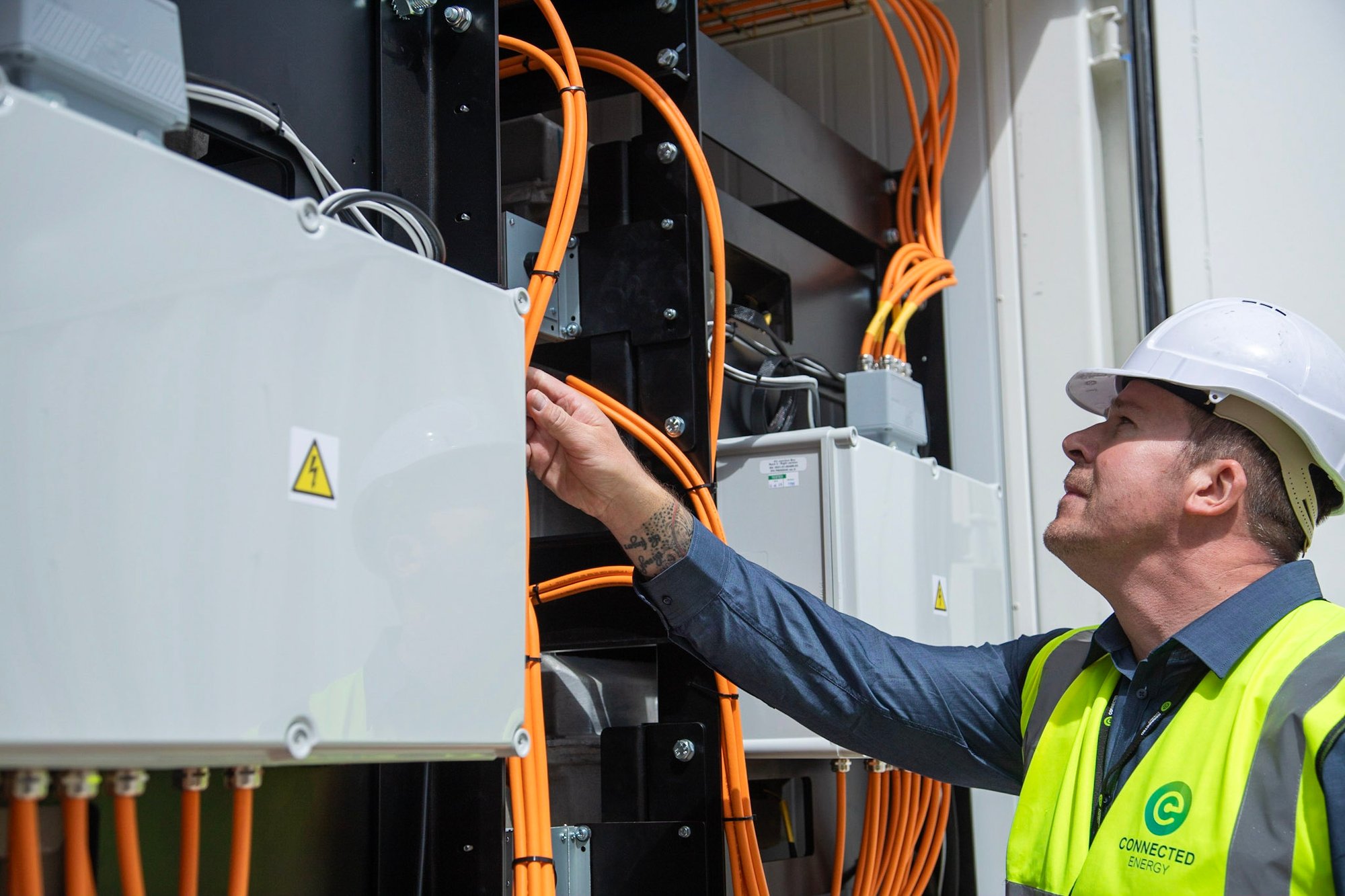Connected Energy

If you haven't already, explore the first two chapters in Connected Energy's innovation story and understand the whole journey around their partnership with the National Innovation Centre for Data.
Read Part I: State of Health and Part II: Data Visualisation
The company
Connected Energy specialises in technology systems for grid decarbonisation. This is through design of energy storage systems utilising second-life electric vehicle (EV) batteries. With systems spanning across the UK and Europe, the company champions the circular economy by giving these batteries a new lease of life.
This approach facilitates a smoother transition to renewable energy sources like wind and solar, which, while sustainable, can be intermittent in nature. By harnessing the power of second-life batteries to store surplus energy generated during peak conditions, Connected Energy ensures a steady and reliable energy supply even when natural conditions are less favourable for power generation.
The problem
Connected Energy identified a critical challenge in optimising the performance and safety of second-life EV batteries: the need for advanced anomaly detection. With the complexity of battery health data and the diversity of battery types and conditions, the company sought to refine their ability to predict and respond to potential issues before they impacted system performance.
Commenting on the motivation for an anomaly detection system, Connected Energy’s Head of Data Services Frazer Wagg highlights the advantage of harnessing data to identify trends and failures even earlier. This would help improve already robust and safe processes: “We have a lot of these systems out there. Our safety processes are extremely robust, but we wanted to explore how could we add something new on top of that. For us, anomaly detection is all about instituting preventative maintenance to catch problems early.”
The scope of the project was ambitious, given the volume of data that the team extracted from the batteries: "With anomaly detection, the volume of data we're grappling with presents both a challenge and an opportunity. As Frazer puts it, 'We're looking at hundreds of data points per second per system. As we roll out to larger systems, those data points will significantly increase. We're dealing with around 400 data points per system per second, which is not humanly scalable.
This vast amount of data necessitates the implementation of sophisticated AI tools to ensure the system's integrity is maintained through close to real-time feedback to the operations team"
.png?width=1800&height=900&name=Article%20images%20(3).png)
The goal
Reflecting on the goal of the project, Frazer said “A lot of the data from the batteries is quite varied and we can extract a lot of data from the batteries. When you have a lot of data, machine learning can then be used to spot trends and failure modes that were unknown or unexpected. The goal was to build a tool to identify them early before they could become issues.”
The company aimed to develop a robust anomaly detection system that could:
- Predict and identify deviations in battery performance in real-time.
- Enhance safety and reliability of battery storage systems.
- Provide actionable insights to improve battery management and maintenance.
To achieve these objectives, Connected Energy partnered with the National Innovation Centre for Data (NICD) to leverage cutting-edge data science and AI techniques.
The result
The collaboration led to the creation of an advanced anomaly detection framework, integrating machine learning algorithms with Connected Energy’s existing data infrastructure. This solution enabled the company to monitor battery performance continuously, identify anomalies early, and take pre-emptive action to maintain system integrity.
"This project has transformed our approach to battery health management, allowing us to pre-empt potential issues and enhance the reliability of our energy storage solutions."
Frazer Wagg, Head of Data Services, Connected Energy

Anomaly detection
Clustering algorithms are a set of methods in data science used to group similar items together.
Imagine you have a pile of different coloured balls and you want to organise them so that balls of the same colour are in the same group — that's essentially what clustering algorithms do with data.
In the context of anomaly detection, these algorithms help to find patterns or groups in the data, and anything that doesn't fit into these groups might be considered an anomaly, or an outlier. Anomalies are like a red ball in a pile of blue ones — they stand out because they don't fit with the majority.
Data science tools and techniques
To develop a sophisticated anomaly detection system, Connected Energy and the National Innovation Centre for Data (NICD) embarked on an exploratory journey utilising a range of data science tools and techniques. The initial plan encompassed a variety of potential solutions, escalating in complexity, including K-Means, DBSCAN, One Class SVM, Scalable Unsupervised Outlier Detection (SUOD), and Autoencoder (LSTM).
The National Innovation Centre for Data's (NICD) team offered introductory tutorials on these approaches, after which both Connected Energy and NICD implemented and tested each method using Connected Energy's data.
The process was enriched by Connected Energy's domain knowledge, crucial for identifying real outlier examples within the unlabelled data.
The LSTM-based autoencoder emerged as the most promising solution, heralded for its robustness despite the necessity for further hyperparameter tuning.
This model's success laid the groundwork for future deployment strategies, marking a significant milestone in the project's progress towards automating anomaly detection and enhancing battery system safety and reliability.
.png?width=1800&height=900&name=Article%20images%20(4).png)
A comparison of the clustering algorithms in scikit-learn. Image credit: scikit-learn.org
Business impact
Looking toward the continuing potential of the project started with the National Innovation Centre of Data, Frazer said “We closed alpha stage, but it still needs some significant improvements. This phase helps us to identify gaps in the data that we needed. We needed to generate more data over time, as machine learning models require substantial amounts to form training and testing splits for learning."
Frazer envisions 2024 as a year of big advances “The impact was that we built a strong foundation ready for a fresh look at it. As we come into 2024, this is where we are now doing a lot of improvements to that process. We have been able to give it some time - it is not just knowing that we needed more data, but also recognising what data we should be focusing on and ensuring we gather it. We are labelling all our data that we understand. 2024 is going to be a big year for moving it forwards.”
“It was in an early exploration phase that came out with a tool that is useful but limited. But the potential for it is huge.”
The foundation of an advanced anomaly detection system was built and the promise of continuous improvement as data is gathered now has even more potential help to support Connected Energy's operations and customer relations.
These future advances promise:
- Enhanced system reliability: Early detection of anomalies has reduced downtime and extended the lifespan of battery systems.
- Improved customer confidence: Customers benefit from more reliable and efficient energy storage solutions, backed by data-driven insights into battery health.
- Operational efficiency: The automated anomaly detection process has streamlined maintenance schedules, reducing costs and improving service delivery.
- Innovation and growth: The project has positioned Connected Energy as a leader in battery health management, opening new opportunities for collaboration and expansion in the sustainable energy sector.
"Our projects with the National Innovation Centre for Data have allowed us to explore the new and evolving areas of data science and grow our own team within the company. The guidance and skills developed were invaluable in pushing the team toward our ambitious data goals.”
Frazer Wagg, Head of Data Services, Connected Energy
With thanks to the North of Tyne Combined Authority Digital Growth and Innovation Programme (NTCA Digital) for funding this project.
To find out more about Polybox, visit their website.
You can read more of our case studies and sign up to our newsletter to keep up to date with our latest news, events and developments.

Our Discovery workshop
Our Discovery workshops enable you to explore the potential of your data and understand the benefit you could gain before committing to a full-scale project.